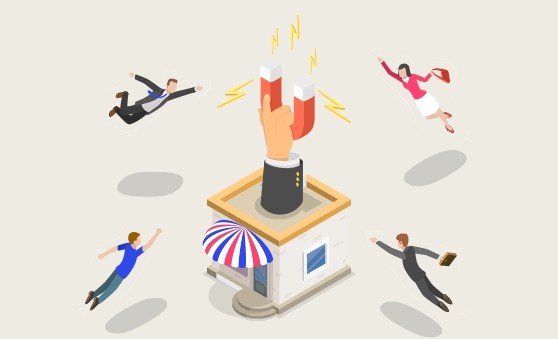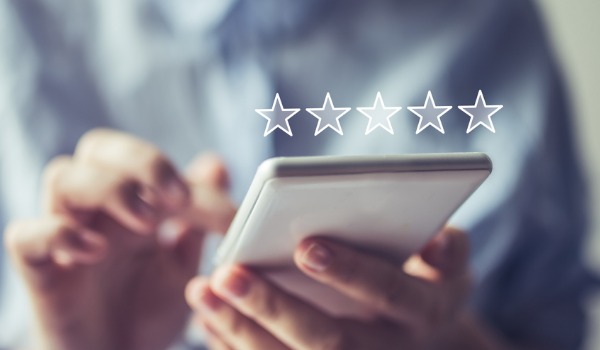What is Customer Acquisition?
Customer Acquisition is the attraction and retention of new customers to grow your business.
So, how do we do it and can it be done better? Are you effectively using the full resources of your business to drive B2B customer acquisition or is new customer acquisition something you leave solely to a new business department? Is your process measurable and repeatable without feeling inflexible or robotic?
Many businesses these days utilise Customer Relationship Management (CRM) platforms to capture data on successful (and not-so successful) conversions. Once analysed, this data should help them learn what works and refine their customer acquisition.
But the data you capture is only as good as the strategy you employ. All parts of a business can contribute to increase customer acquisition – and as a result we need to approach it strategically. Everyone within a business, whether you employ three people, 300 or 3,000, needs to understand not only the importance of customer acquisitions, but their own role in that process.
Before the funnel there was…the funnel
Customer acquisition is, in sales terms, typically described as ‘top of the funnel’. It’s seen as the first step into the sales funnel that describes how a business engages with a customer to convert their interest into a sale or sign-up.
However, customer acquisition has its funnel:
- Awareness
- Consideration
- Conversion
How our teams, our creative and our channels engage with prospective customers at these early stages is crucial to successful customer acquisition.
Who are you?
Awareness is the first strand of customer acquisition. If people are not aware of your brand or business, there is no chance they will become a customer.
Drawing attention can be done in a number of ways:
- Marketing – get your brand seen exactly where your customers are. From paid social to print ads, broadcast media to blogs, emailers to webinars and more, marketing your business secures eyeballs and is the most direct way to raise awareness. It’s worth noting that tactics like emailers will require consent under GDPR – find out more here.
- Creative assets – from branding to ad designs, the right creative is great at capturing attention wherever it is placed. Imagery and, increasingly, video offers a great way to get key messages and benefits across to prospects in a short window of time
- PR – tell your stories. PR is one of the most cost-effective and trusted ways to raise awareness. Whatever the size of your business, there is a PR solution, from employing an in-house team to working with an agency or freelance professionals. An experienced head can help make your stories impactful and get them in front of the right people to secure coverage.
- Sales incentives – These are an impactful way to attract attention. But it’s about more than simply slashing costs. Using data-driven strategies, you can create trackable sales incentives that measurably increase awareness and support customer acquisition.
Target relevant outlets and audiences with attention-grabbing content that quickly and details what you offer and why it is beneficial. Striking the right tone will get you noticed and begin to build awareness.
The attention question
For outbound awareness activity, you also need to bear in mind the attention span of your audience. This can differ across audiences, but as a rule of thumb recent research by media platform Teads and Lumen Research found that a single exposure to awareness content needed to command attention for 100 milliseconds to 1 second, activity further down the funnel needed to elicit linger dwell times:
- Familiarity: 1s+
- Favourability: 3s+
- Consideration: 9s+
- Purchase intent: 8s+
Find your tribe
Customer acquisition of course is not only reliant on attracting inbound engagement. Actively seeking potential customers to target is highly important.
Your initial awareness activity can, in part, help to gather potential prospects to reach out to – through thought leadership and data assets requiring data capture – – for example, downloadable reports.
If you can research your target audience you can, even under GDPR, cold-call, however, this is not always the most effective way to acquire new customers.
When considering purchasing contact lists of potential customers, take care. Not only is the suitability of these leads likely to vary wildly, but you need to seek your own specific permission to contact them – and record it correctly – to comply with GDPR. Your first contact with a cold lead must give them a clear opportunity to opt into communications with you or opt-out – and getting that wrong can be costly!
If you have a CRM platform, you can often import your prospects and streamline the qualification process – speeding up how you sort true potential customers from those who do not want or need what you offer.
Working with your marketing, social and PR teams is also essential to outbound customer acquisition. They will be able to flag individuals who engage with content but may not follow-up with further actions or contact, or those who have posted queries in either direct messages or comment sections. They can also offer you sector insight, helping you shape your offer based on customer behaviour, the current news agenda and how your brand is perceived and engaged with on social.
All this contextual data will give you the ability to refine your communications and outreach and make your customer acquisition strategy more successful.
Importantly however, when using these tactics to support customer acquisition you need to ensure that they are focused on driving action. Awareness alone is not an efficient way to drive behaviour. Crafting messaging and imagery with calls to action (CTAs) that guide and nudge prospects to the next stage effectively requires planning and teamwork.
Why you?
Once people are aware of your business, you need to answer the why question. Maybe you are the market leader, perhaps you offer the best value, and possibly (though less likely) you are the only business offering a particular product or service.
What matters is getting these messages noticed and understood in as short a time as possible – an instant if you can.
Consideration is a research phase that relies heavily on your website, blogs and initial interactions with customers through social media messages, emails or calls. But being able to serve potential customers the detail – and solutions – they need in short, snappy, engaging ways will keep them on your pages for longer and increase your chances of bringing them into the fold.
You don’t get a second chance to make a first impression, however, so it’s important to ensure that we quality-check all the key touch points for someone in the consideration phase:
- Is our branding consistent?
- Is our tone of voice appropriate?
- Is the customer journey on our website simple and efficient?
- Is the frequency and relevance of our marketing communications correct?
- Are we effectively presenting our worth to potential customers?
If a prospect interacts with one or more of these touchpoints and finds something ‘off’ or that raises a red flag, we will most likely lose that acquisition opportunity. Get it right and prospects will be ready for the conversion phase, when your sales team will begin drilling down into how your business can help new customers meet their challenges and goals.
Making it happen
When customers are ready to pass on to the sales team, they are entering the buying phase. Building a relationship at this point is key. Offering products or services that quickly and comprehensively solve a prospect’s biggest pain points is crucial but, in the end, some things never change.
People buy from people. If your team approaches their work with honesty, integrity, kindness and enthusiasm and takes time to listen to the challenges a prospect wants to address before offering a solution, they are more likely to successfully bring a new customer on board.
Whatever your business, B2C or B2B, what customers need from you, how well you can provide that and how good they feel throughout the process will ultimately determine whether a prospect becomes a customer.
Data-driven customer acquisition
Love2shop Business employs an expert team of engagement and acquisition professionals to help you build an efficient, reliable customer acquisition strategy.
Using our suite of incentivisation products, our innovative engagement platform and decades of experience, Love2shop Business can support your acquisition goals and your customer acquisition goals. Visit business.love2shop.co.uk to learn more.



 You can offer discounts, 2-for-1 deals, or attach a reward like a digital or plastic gift card to certain purchases – whatever works for your business. It’s simple, but as our clients will tell you, it works.
You can offer discounts, 2-for-1 deals, or attach a reward like a digital or plastic gift card to certain purchases – whatever works for your business. It’s simple, but as our clients will tell you, it works. Aside from their fitness goals updates and park walks, it’s been months since anyone had anything decent to share on social media. Across Facebook, Instagram and TikTok, the content well has been pumped dry. That gives your company an opportunity – be shareable.
Aside from their fitness goals updates and park walks, it’s been months since anyone had anything decent to share on social media. Across Facebook, Instagram and TikTok, the content well has been pumped dry. That gives your company an opportunity – be shareable. As restrictions ease one at a time there will, temporarily, be a slightly unequal situation. Depending on what kind of physical space is available, and which restrictions are affecting their business, some companies will have an advantage over others.
As restrictions ease one at a time there will, temporarily, be a slightly unequal situation. Depending on what kind of physical space is available, and which restrictions are affecting their business, some companies will have an advantage over others.